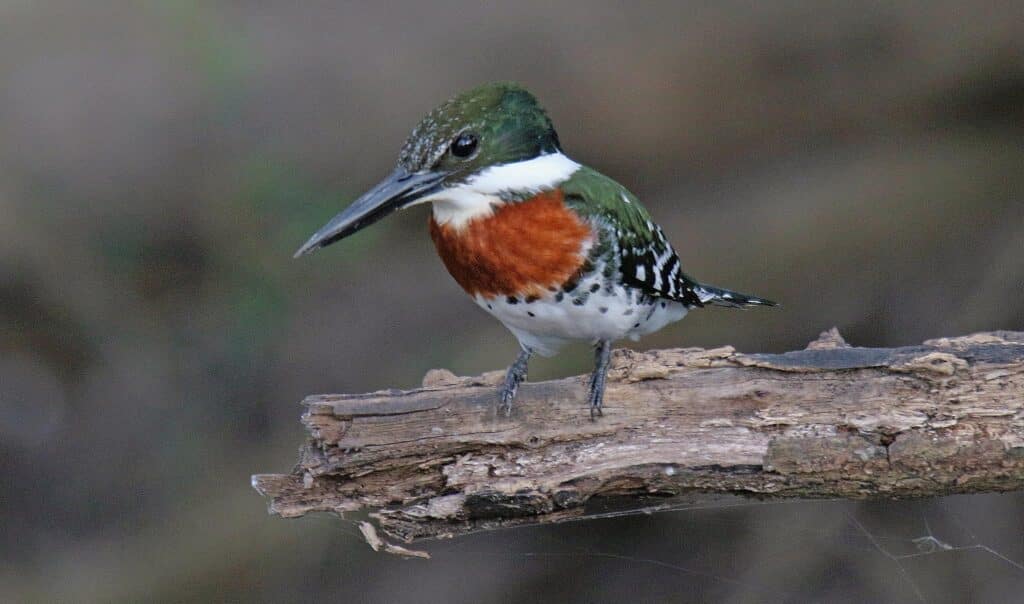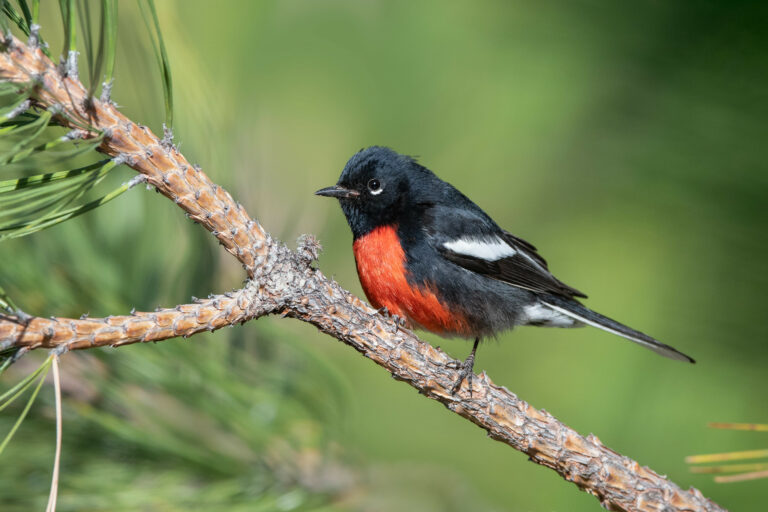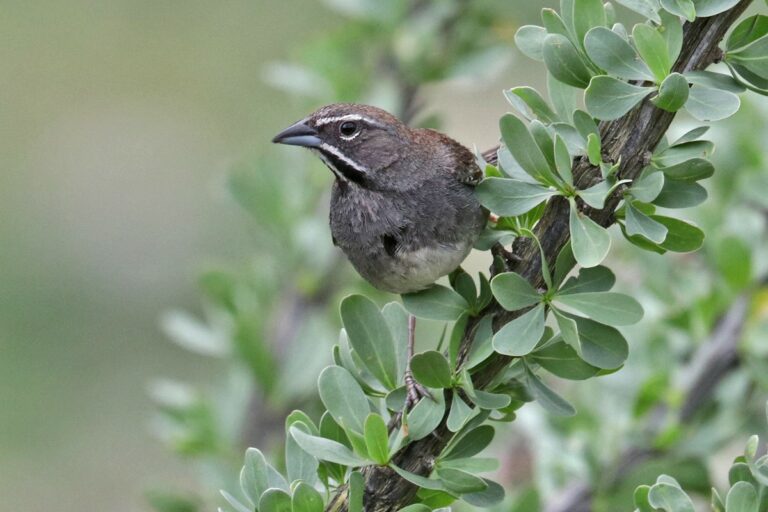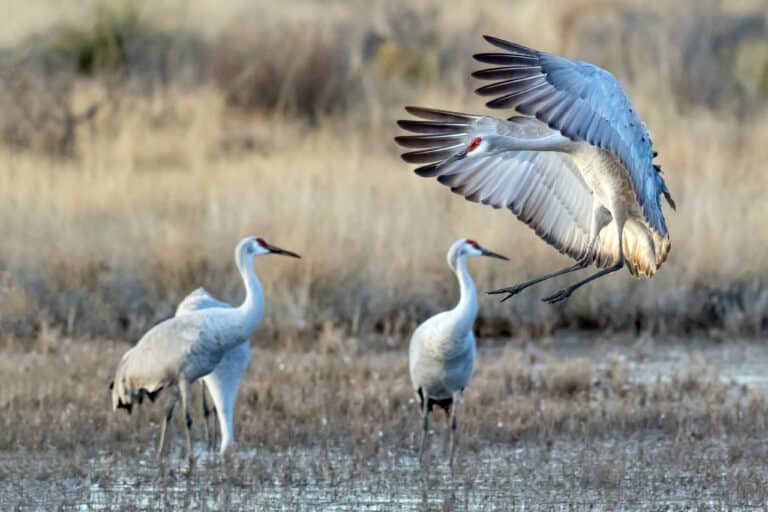In researching the Green Kingfisher, I have discovered a group of birds that rivals the shrikes in avian coolness. The kingfishers of the world are amazingly colored with an array of great names such as Sacred Kingfisher and Chocolate-backed Kingfisher. Some have super long tails and all have that characteristic humongous bill! The little emerald beauty that is the Green Kingfisher is a rare Southeast Arizona specialty bird that can also be found in Texas, but it’s a common species throughout most of its range that extends down through South America nearly to Patagonia. Because of its small size, it is able to take advantage of very small, slow-moving streams, but the water must be clear in order for it to hunt small fish, shrimp, and insects. Unlike other kingfishers, Greens rarely hunt by hovering—they instead use perches over the water or in neighboring dense streamside vegetation. This makes them very inconspicuous compared to the busy and loudly calling Belted Kingfishers, only infrequently giving away their locations by quietly ticking.
Green Kingfishers need soft-sided, well vegetated banks in which to dig their burrow nest cavities where they lay eggs directly onto the soil. Like all kingfishers, they have two forward-facing, partially-fused toes (syndactyly) to be used like a shovel after excavating burrow soil with their large bills (they’re not just used for fishing!). The fragile nature and terrestrial exposure of these nest sites makes it crucially important to keep cattle out of kingfisher habitat at local sites such as Patagonia Lake State Park.
Recent conservation work in Texas has yielded small increases in the more numerous populations of that state, while the number of birds in Arizona has always been much lower. Currently, Green Kingfisher seems to be doing quite well here with many birds spread out along the Sonoita Creek and Santa Cruz River (Tubac and south to Rio Rico) corridors. Now is an excellent time to find one!
Image by Hemant Kishan




